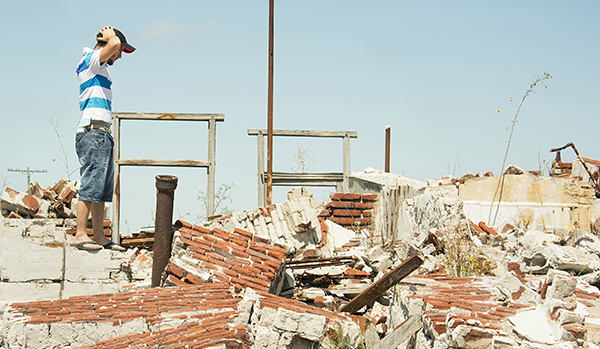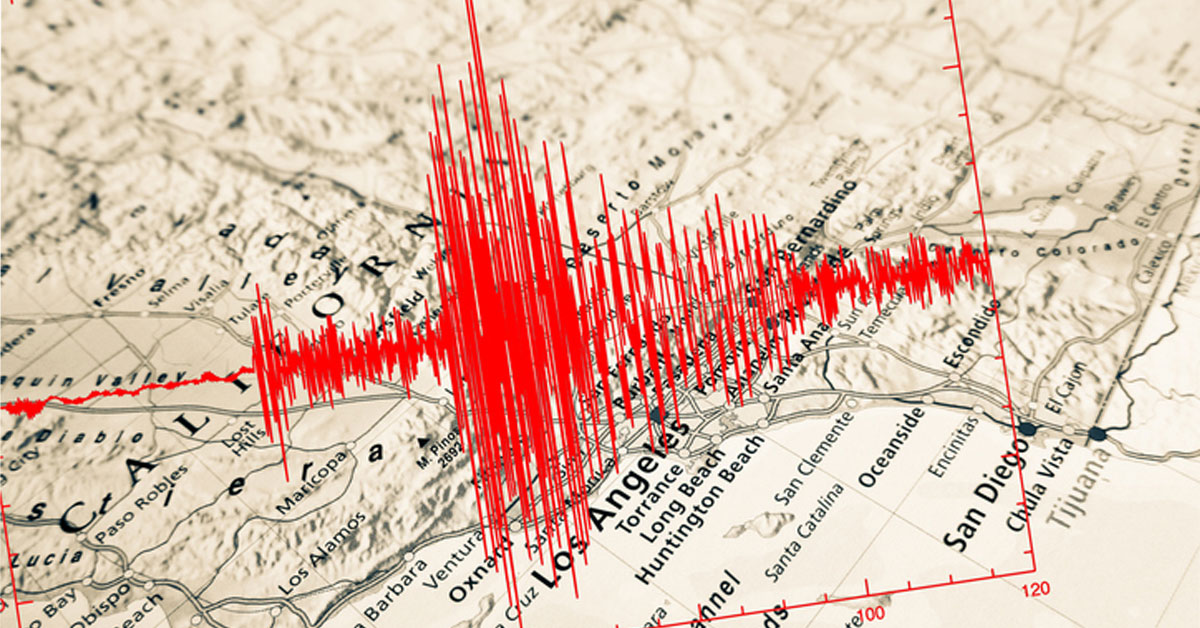It’s the 11th anniversary of the Great California ShakeOut, which takes place this year on October 17th at 10:17 A.M! Everyone is encouraged to participate in this earthquake drill, whether you’re at home, work or school. The main goal of the ShakeOut is to make sure Californians are prepared in case of a major earthquake. Below, you’ll find more information on the event and important earthquake-safety tips.
Behind the Great California ShakeOut
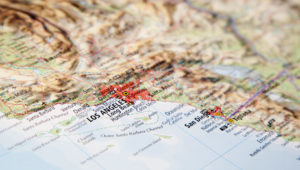 The Great California ShakeOut was created to spread awareness about the dangers of earthquakes and to teach people how to prepare for a large earthquake. The mass earthquake drill first began in southern California in 2008 due to the state’s vulnerability to earthquakes. While some areas of California are more prone to having earthquakes than others, the entire state is at a higher risk than the rest of the U.S.
The Great California ShakeOut was created to spread awareness about the dangers of earthquakes and to teach people how to prepare for a large earthquake. The mass earthquake drill first began in southern California in 2008 due to the state’s vulnerability to earthquakes. While some areas of California are more prone to having earthquakes than others, the entire state is at a higher risk than the rest of the U.S.
The ShakeOut provides Californians and people all over the world an opportunity to practice earthquake safety and readiness. Earthquakes are usually unpredictable, so it’s important to know what to do when one strikes, whether you’re at home, work, school or elsewhere. Every year, more and more people participate in the earthquake drill, including millions of people worldwide.
There are several ways you can participate in the California ShakeOut on October 17th. You can register your family, school, business or organization on the official ShakeOut website here. This will help you organize a plan and offer suggestions on how you can best prepare yourself for an earthquake.
How to Prepare for an Earthquake
There are several things you can do to prepare yourself for an earthquake. Make sure to read these tips before the ShakeOut:
1. Create a Disaster Kit
Everyone should have a personal disaster kit. Keep one in your home, car and at work or school. You never know where you will be when an earthquake or other emergency happens. You can easily find detailed lists online of what to include in each disaster kit, but essential items include medications, a first aid kit, bottled water, emergency cash, non-perishable food, a working flashlight with extra batteries, toiletries, extra clothes and copies of personal identification. Ideally, keep your disaster kit in a single waterproof container or bag that is easily accessible.
2. Have a Disaster Plan
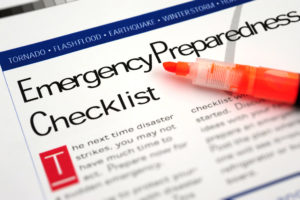 It’s important to have a disaster plan for your home and office or school. At home, make sure everyone in your household is on the same page about what to do in case of an emergency. Plan to meet at a safe distance outside of your home if there’s an earthquake or other emergency. If members are away, also have an agreed upon place for the household to meet. This is important if phone lines are down.
It’s important to have a disaster plan for your home and office or school. At home, make sure everyone in your household is on the same page about what to do in case of an emergency. Plan to meet at a safe distance outside of your home if there’s an earthquake or other emergency. If members are away, also have an agreed upon place for the household to meet. This is important if phone lines are down.
3. Know Your Emergency Contacts
You and everyone in your family should know their emergency contacts. If possible, it’s good to have an out-of-state emergency contact, as well. Make sure to inform your emergency contacts that you’ll be calling them if necessary in case of an emergency. That way they’ll be more likely to pick up when you call.
4. Know How to Drop, Cover and Hold On
Official rescue teams from the U.S. and other countries agree that “Drop, Cover and Hold On” is the safest and most appropriate method during an earthquake. Methods like running outside or standing in a doorway are not considered safe and are not recommended. This is the method you should practice on the day of the California ShakeOut.
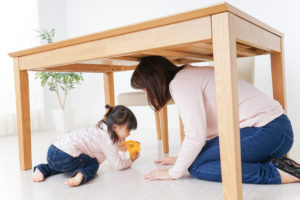 To reduce your chances of injury during an earthquake, DROP down onto your hands and knees, wherever you are.
To reduce your chances of injury during an earthquake, DROP down onto your hands and knees, wherever you are.- COVER your head and neck with one arm and crawl under any nearby stable desk or table.
- Once you’re under shelter, HOLD ON to it with one hand. If there’s no shelter around you, hold on to your head and neck with both arms. Make sure to stay by an interior wall away from windows and hold on until the shaking stops completely.
5. Know What NOT to Do:
The greatest dangers during an earthquake are flying objects and falling debris. The “Drop, Cover and Hold On” method is specifically designed to help you avoid injury from falling debris or being struck by flying objects like bookcases, lamps, etc. These are three main actions that are NOT recommended by the U.S. and international search and rescue teams because they put you in greater danger:
- Do not run outside or to other rooms. During an earthquake, the area near the exterior walls of a building is the most dangerous place to be. To stay away from collapsing windows, facades and other architectural details, stay where you are (inside or outside). Drop to the ground before the earthquake drops you down and to avoid flying objects.
 Do not stand in a doorway. In modern houses, doorways are no longer the strongest part of the structure. They will not protect you from falling or flying objects, which are the most likely sources of injury. You are much safer under a table or desk where you can hold on during severe shaking.
Do not stand in a doorway. In modern houses, doorways are no longer the strongest part of the structure. They will not protect you from falling or flying objects, which are the most likely sources of injury. You are much safer under a table or desk where you can hold on during severe shaking.- Do not get in the “triangle of life.” The “triangle of life” method recommends that you get next to a table (or car if you’re outside) rather than underneath it. But it is based on several wrong assumptions, such as the idea that buildings always collapse during earthquakes, that all furniture will be destroyed, and that people can anticipate how a building will collapse and where survivable spaces will be. All of these assumptions are incorrect, making the “triangle of life” method dangerous and unsafe.
Earthquake Insurance
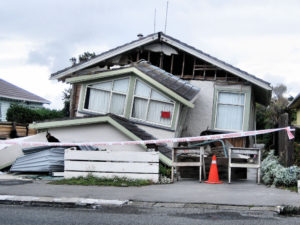 There’s one other thing you need to prepare much farther in advance. That is Earthquake Insurance. Many people assume that their Homeowners Insurance will cover them in an earthquake, but it does not. Earthquake Insurance must be purchased as a separate policy. This type of policy does not cover all damages caused by an earthquake, but it will help you rebuild your home.
There’s one other thing you need to prepare much farther in advance. That is Earthquake Insurance. Many people assume that their Homeowners Insurance will cover them in an earthquake, but it does not. Earthquake Insurance must be purchased as a separate policy. This type of policy does not cover all damages caused by an earthquake, but it will help you rebuild your home.
All homeowners, condo owners, renters and mobile home owners should invest in Earthquake Insurance. The policy will cover (up to limits) damage to personal belongings and living expenses while your damaged home, condo, mobile home or apartment is being repaired. For more information on Earthquake Insurance and to add coverage to your home, speak with an Insurance Specialist at (855) 247-5298.
Are You Ready?
Now that you’ve read about the Great California ShakeOut and how to prepare yourself for an earthquake, you’ll be ready for the drill on October 17th. This day is a great opportunity to ensure your disaster kits, disaster plan and earthquake method are ready to go. It’s a good idea to get your family and friends involved, too. You can never be too prepared!
The information in this article was obtained from various sources. This content is offered for educational purposes only and does not represent contractual agreements, nor is it intended to replace manuals or instructions or the advice of a qualified professional. The definitions, terms and coverage in a given policy may be different than those suggested here and such policy will be governed by the language contained therein. No warranty or appropriateness for a specific purpose is expressed or implied.
